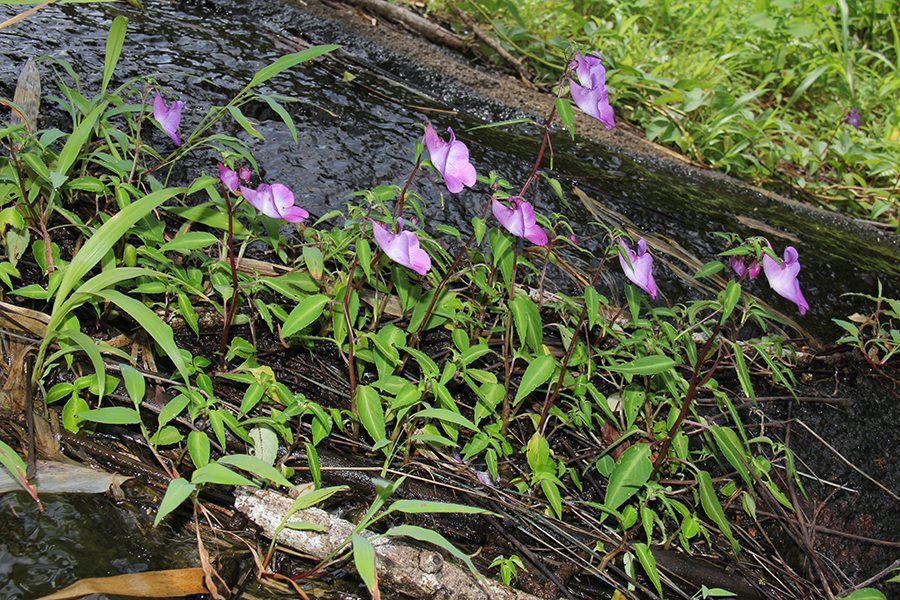RANGOON — Tanintharyi Division has given its name to a delicate, purple and pink-tinted new species of flower, the Impatiens tanintharyiensis.
The plant was found growing at two locations near the Hawang Falls at Thet Kal Kwet village, Dawei.
There are about a thousand species of Impatiens globally in tropical and subtropical Africa and Eurasia.
In Europe, the flower is sometimes called “busy lizzy” or ‘touch-me-not’.
Southeast Asia is one of five global hotspots for the plant. The others are tropical Africa, Madagascar, Southern India and the Sino-Himalayan region.
The new species is described by researchers Saroj Ruchisansakun from Thailand, Dr. Saw Lwin of the Myanmar Horticulturists Association and others in a recent issue of the journal Phytotaxa.
But Impatiens tanintharyiensis may be under threat just as it has been found.
Under International Union of Conservation (IUCN) criteria, the flower could be endangered, according to the authors.
“The Hawang Falls locality is under severe pressure from local tourism. Since there are fewer than 100 individuals at each locality, it is assumed that human activities in the region could lead them to rapid extinction,” they write.
“If the government or local people would like to protect the plant, they could preserve some part of the waterfall to protect the population, and promote the other parts as an ecotourism destination,” Saroj Ruchisansakun told The Irrawaddy.

The Tanintharyi find has brought attention to a species that was last addressed in Burma by taxonomists around a century ago.
Sir Joseph Dalton Hooker, a distinguished British botanist and close friend of Charles Darwin, described various species of Impatiens in Burma in “A Sketch of the Flora of British India,” published in 1904. Irish soldier and naturalist SM Toppin found a species in the Kachin hills that was named after him in 1920.
Just 48 species of the plant, including the latest one, have been recorded in Burma. Neighboring countries have many more recorded impatiens species: India has around 200 and China has around 280.
Burma’s isolation for more than half a century under military rule means that much of its biodiversity has yet to be identified and described by scientific professionals.
The under-explored Tanintharyi region is widely regarded as a global hotspot for biodiversity with extensive habitats for plants and threatened wildlife species, ranging from the Gurney’s Pitta to tigers.
But the region’s special forest conditions are under threat from development projects, roads and commercial agriculture, including oil palm and rubber plantations.

















